-
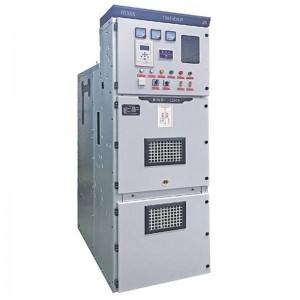
HYXHX series 10kv Arc Suppression Cabinet
In my country’s 3~35KV power supply system, most of them are neutral point ungrounded systems. According to national regulations, when a single-phase grounding occurs, the system is allowed to run with a fault for 2 hours, which greatly reduces the operating cost and improves the reliability of the power supply system. However, due to the gradual increase in the power supply capacity of the system, the power supply mode is The overhead line is gradually transformed into a cable line, and the capacitance current of the system to the ground will become very large. When the system is single-phase grounded, the arc formed by the excessive capacitive current is not easy to extinguish, and it is very likely to evolve into intermittent arc grounding. At this time, the arc grounding overvoltage and the ferromagnetic resonance overvoltage excited by it will be It seriously threatens the safe operation of the power grid. Among them, the single-phase arc-ground overvoltage is the most serious, and the overvoltage level of the non-fault phase can reach 3 to 3.5 times the normal operating phase voltage. If such a high overvoltage acts on the power grid for several hours, it will inevitably damage the insulation of electrical equipment. After several times of cumulative damage to the insulation of electrical equipment, a weak point of insulation will be formed, which will cause an accident of ground insulation breakdown and short circuit between phases, and at the same time cause insulation breakdown of electrical equipment (especially the insulation breakdown of the motor) ), the cable blasting phenomenon, the saturation of the voltage transformer stimulates the ferromagnetic resonance body to burn down, and the explosion of the arrester and other accidents.
-

Parallel resistance device
The parallel resistance device is a set of resistance cabinet comprehensive line selection device installed in parallel with the neutral point of the system and connected with the arc suppression coil. More effective and accurate selection of fault lines. In the arc-suppressing coil system, the parallel resistance integrated line selection device can be used to achieve 100% line selection accuracy. The parallel resistance device, or the parallel resistance cabinet, is composed of grounding resistors, high-voltage vacuum connectors, current transformers, current signal acquisition and conversion systems, resistance switching control systems, and supporting dedicated line selection systems.
-
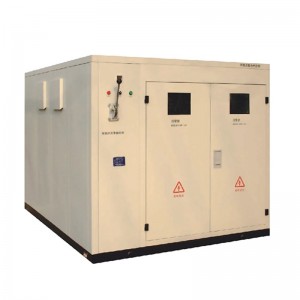
Generator neutral point grounding resistance cabinet
The neutral point grounding resistance cabinet of Hongyan generator is installed between the neutral point of the generator and the ground. During the operation of the generator, single-phase grounding is the most common fault, and the fault point will further expand when arcing is grounded. Stator winding insulation damage or even iron core burns and sintering. Internationally, for single-phase ground faults in generator systems, high-resistance grounding at the neutral point of generators is widely used to limit ground current and prevent various overvoltage hazards. The neutral point can be grounded through a resistor to limit the fault current to an appropriate value, improve the sensitivity of the relay protection and act on tripping; at the same time, only local slight burns may occur at the fault point, and the transient overvoltage is limited to the normal line voltage. 2.6 times of the neutral point voltage, which limits the re-ignition of the arc; prevents the arc gap overvoltage from damaging the main equipment; at the same time, it can effectively prevent the ferromagnetic resonance overvoltage, thereby ensuring the safe operation of the generator.
-

Transformer neutral point grounding resistance cabinet
In the 6-35KV AC power grid of my country’s power system, there are ungrounded neutral points, grounded through arc suppression coils, high-resistance grounded, and small-resistance grounded. In the power system (especially the urban network power supply system with cables as the main transmission lines), the ground capacitive current is large, which may make the occurrence of “intermittent” arc ground overvoltage have specific “critical” conditions, resulting in arcing The application of the neutral point resistance grounding method for the generation of grounding overvoltage forms a discharge channel for the energy (charge) in the grid-to-ground capacitance, and injects resistive current into the fault point, making the grounding fault current take on a resistance-capacitance nature, reducing and The phase angle difference of the voltage reduces the re-ignition rate after the current at the fault point crosses zero and breaks the “critical” condition of the arc overvoltage, so that the overvoltage is limited within 2.6 times of the phase voltage, and at the same time guarantees high-sensitivity ground fault protection The equipment accurately determines and cuts off the primary and secondary faults of the feeder, thus effectively protecting the normal operation of the system.
-
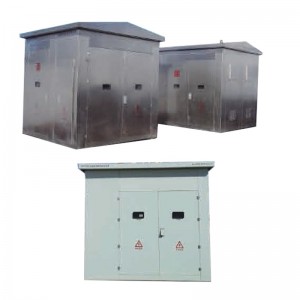
Grounding resistance cabinet
With the rapid development of urban and rural power grids, great changes have taken place in the power grid structure, and a distribution network dominated by cables has appeared. The ground capacitance current has increased sharply. When a single-phase ground fault occurs in the system, there are fewer and fewer recoverable faults. The use of resistance grounding method not only adapts to the main development and change requirements of my country’s power grid, but also reduces the insulation level of power transmission equipment by one or two grades, reducing the investment of the overall power grid. Cut off the fault, suppress the resonance overvoltage, and improve the safety and reliability of the power system.
-

Damping resistor box
In order to prevent the unbalanced voltage of the neutral point of the grid system from increasing due to the input and measurement of the arc suppression coil when the arc suppression coil of the pre-adjustment compensation mode is working under the normal state of the power grid, it is researched and designed. When the power grid is running normally, adjust the inductance of the arc suppression coil to an appropriate position in advance, but at this time the inductance and capacitive reactance are approximately equal, which will make the power grid in a state close to resonance, causing the neutral point voltage to rise. In order to prevent this If the phenomenon occurs, a damping resistor device is added to the arc suppression coil compensation device in the pre-adjustment mode, so as to suppress the displacement voltage of the neutral point to the required proper position and ensure the normal operation of the power supply network.
-
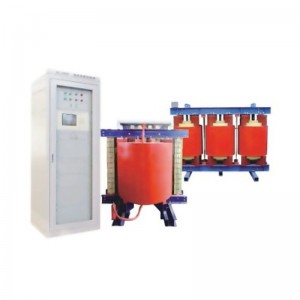
Complete set of phase-controlled arc suppression coil
Structural principle description
The phase-controlled arc suppression coil is also called “high short-circuit impedance type”, that is, the primary winding of the arc suppression coil in the complete device is connected to the neutral point of the distribution network as the working winding, and the secondary winding is used as the control winding by two reversely connected The thyristor is short-circuited, and the short-circuit current in the secondary winding is adjusted by adjusting the conduction angle of the thyristor, so as to realize the controllable adjustment of the reactance value. adjustable.
The conduction angle of the thyristor varies from 0 to 1800, so that the equivalent impedance of the thyristor varies from infinity to zero, and the output compensation current can be continuously adjusted steplessly between zero and the rated value.
-
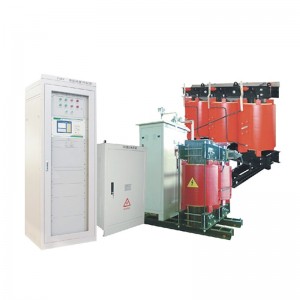
Capacitance-adjustable arc suppression coil complete set
Structural principle description
The capacity-adjusting arc suppressing coil is to add a secondary coil to the arc suppressing coil device, and several groups of capacitor loads are connected in parallel on the secondary coil, and its structure is shown in the figure below. N1 is the main winding, and N2 is the secondary winding. Several groups of capacitors with vacuum switches or thyristors are connected in parallel on the secondary side to adjust the capacitive reactance of the secondary side capacitor. According to the principle of impedance conversion, adjusting the capacitive reactance value of the secondary side can meet the requirement of changing the inductor current of the primary side. There are many different permutations and combinations for the size of the capacitance value and the number of groups to meet the requirements of the adjustment range and precision.
-
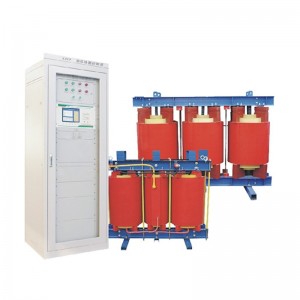
Complete set of bias magnetic arc suppression coil
Structural principle description
Biasing type arc suppressing coil adopts the arrangement of a magnetized iron core segment in the AC coil, and the magnetic permeability of the iron core is changed by applying a DC excitation current, so as to realize the continuous adjustment of the inductance. When a single-phase ground fault occurs in the power grid, the controller instantly adjusts the inductance to compensate the ground capacitance current.
-
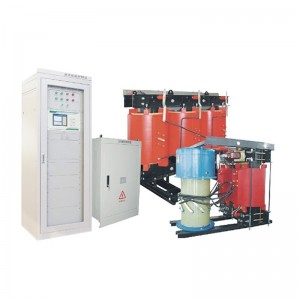
Complete set of turn-adjusting arc suppression coil
In the transformation and distribution network system, there are three types of neutral point grounding methods, one is the neutral point ungrounded system, the other is the neutral point through the arc suppression coil grounding system, and the other is the neutral point through the resistance grounding system system.